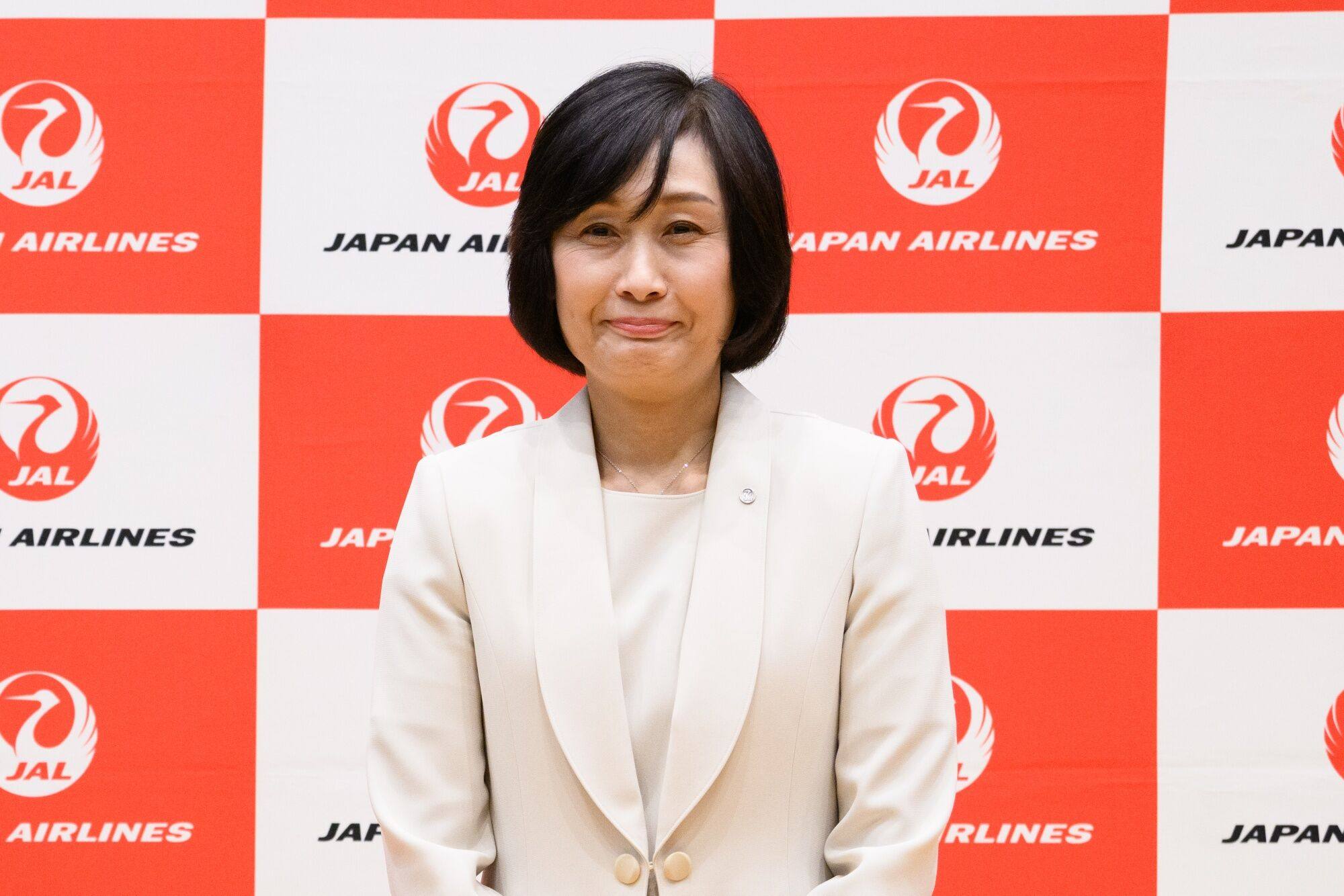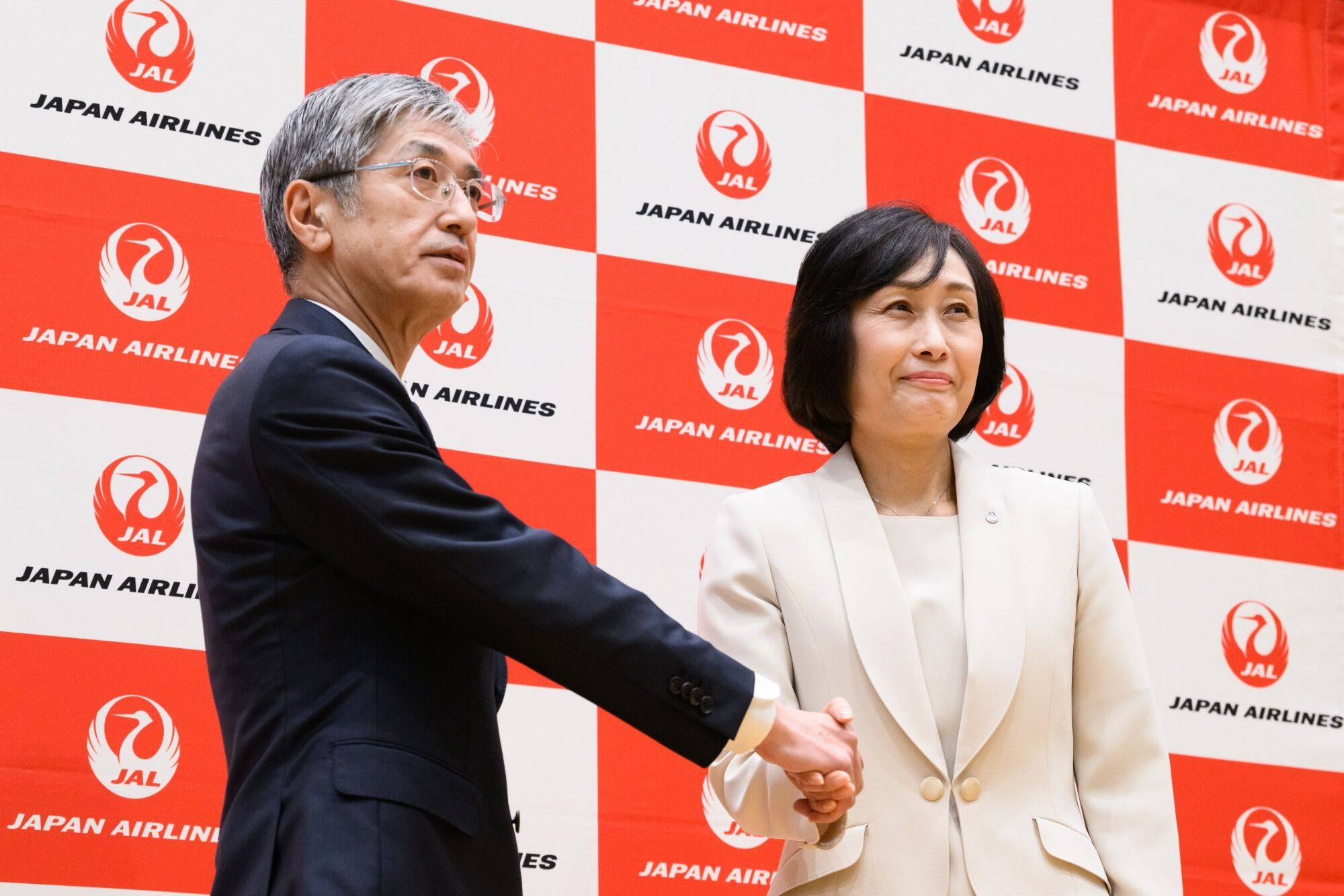
Flying high: how Japan Airlines’ first woman leader went from cabin crew to president
- Mitsuko Tottori’s ascent from cabin to boardroom is notable in a country where advancement opportunities are still limited for women
- A fifth of JAL’s 32 executive officers are women, including Tottori. Women account for just 4.7 per cent of executive officers at big Japanese firms
Tottori, who rose through the ranks from cabin crew to chief customer officer, takes over as president of JAL in April, becoming one of the few women to lead a major global airline. Qantas has a woman boss, and KLM and Air France are led by women who report to a male group CEO.
“Her case shows that a woman who started her career from the lowest position could become the head of the firm. It serves as a great model for women’s career development in Japanese companies,” said Kumiko Nemoto, a professor of management at Tokyo’s Senshu University, and author of a book on gender inequality.
Japan’s 5 women ministers are ‘progress’ in a long road to equality: advocates
Inamori, the founder of electronics company Kyocera and mobile operator KDDI who died in 2022, was tapped by the government to revive JAL. Known in Japan as the “God of management”, the ordained Buddhist monk prized hands-on experience and said the carrier long neglected customers.
Her appointment was proof “Inamori’s philosophy of focusing on the frontline still exists at JAL”, one JAL executive said. Disdainful of hierarchy and the unquestioning obedience to rules, Inamori encouraged all staff to act as business leaders, the executive said.
Reuters spoke to seven JAL and industry sources, all of whom declined to be identified so they could speak freely.

Tottori becomes the fourth post-bankruptcy president and the first former flight attendant. Two of her predecessors came from engineering and maintenance, and one was a pilot.
JAL’s board wanted its next president to have experience in the trenches, three executives said. Current boss Yuji Akasaka, who becomes chairman in April, came from engineering and maintenance.
Outgoing chairman Yoshiharu Ueki, a former pilot, was particularly opposed to having a president with little practical experience, said one of the executives, a person familiar with JAL’s thinking.
Tottori was not available for an interview now, a JAL representative said. The airline declined to comment.

‘Career track’
Tottori’s long experience managing cabin crews and safety was one of the reasons she was selected, Akasaka told a press conference this month.
She joined carrier Japan Air System (JAS) in 1985 at a time when becoming a jet-setting flight attendant was considered glamorous and overseas travel was expensive and out of reach for many.
The largely domestic JAS, which lacked the cachet of JAL, was later absorbed by the bigger carrier.
A small Japanese town sets a precedent for women in politics
By the time JAL made Tottori a senior manager of cabin safety in 2013, the airline had implemented Inamori’s management system, where leaders of business units meet monthly to share cost-saving ideas and competitive intelligence.
“She may look quiet on the outside, but she has a strong core,” one of the executives said. “She speaks her mind firmly at meetings.”
Women of Tottori’s generation were rarely put on the career-track, leaving companies now with few internal candidates, said Nobuko Tabata, a partner at executive search firm Egon Zehnder who advises on gender diversity.
As such, the former flight attendant has broken “multiple glass ceilings” and other companies could look to follow by rehauling their training and promotion policies, Tabata said.
In Japan’s push for women bosses, equality is a secondary concern
A fifth of JAL’s 32 executive officers are women, including Tottori. Women account for just 4.7 per cent of executive officers at big Japanese companies, according to a government survey. The percentage is higher when outside board members are included.
In 2019, Tottori was put in charge of the cabin safety department and impressed the demanding Akasaka with well-reasoned points at executive meetings, according to one JAL source familiar with the matter.
“She struck a chord with Akasaka,” the source said.
‘Decoration’
JAL’s crew was lauded this month for a cool-headed response in seeing all 367 passengers safely off a burning jet after a collision with a coastguard plane at Tokyo’s Haneda airport.
Internally, the crew’s actions were seen as the result of measures taken following a 2016 emergency at Hokkaido’s New Chitose Airport, when three people were injured after passengers ignored warnings and evacuated with hand luggage, an executive said.
After New Chitose, Tottori retooled the in-flight safety video to emphasise leaving hand luggage behind and in the Haneda incident, all passengers evacuated empty-handed, the executive said.
How gender inequality is affecting Japan’s economic growth
Akasaka said this month the decision on Tottori was made in autumn and not related to events at Haneda.
Tottori herself appears to have a sense of having missed out in moving around in her career.
She told Nikkei ESG she had spent a “long time” dealing with cabin operations and hoped younger employees could work in different departments to gain wider knowledge.
Many Japanese still see top women executives as “decoration” – brought in just to address gender imbalances, said Senshu’s Nemoto.
Tottori’s promotion could change that and send a message “that she truly earned her current position by accumulating skills and experiences inside the firm”, she said.


